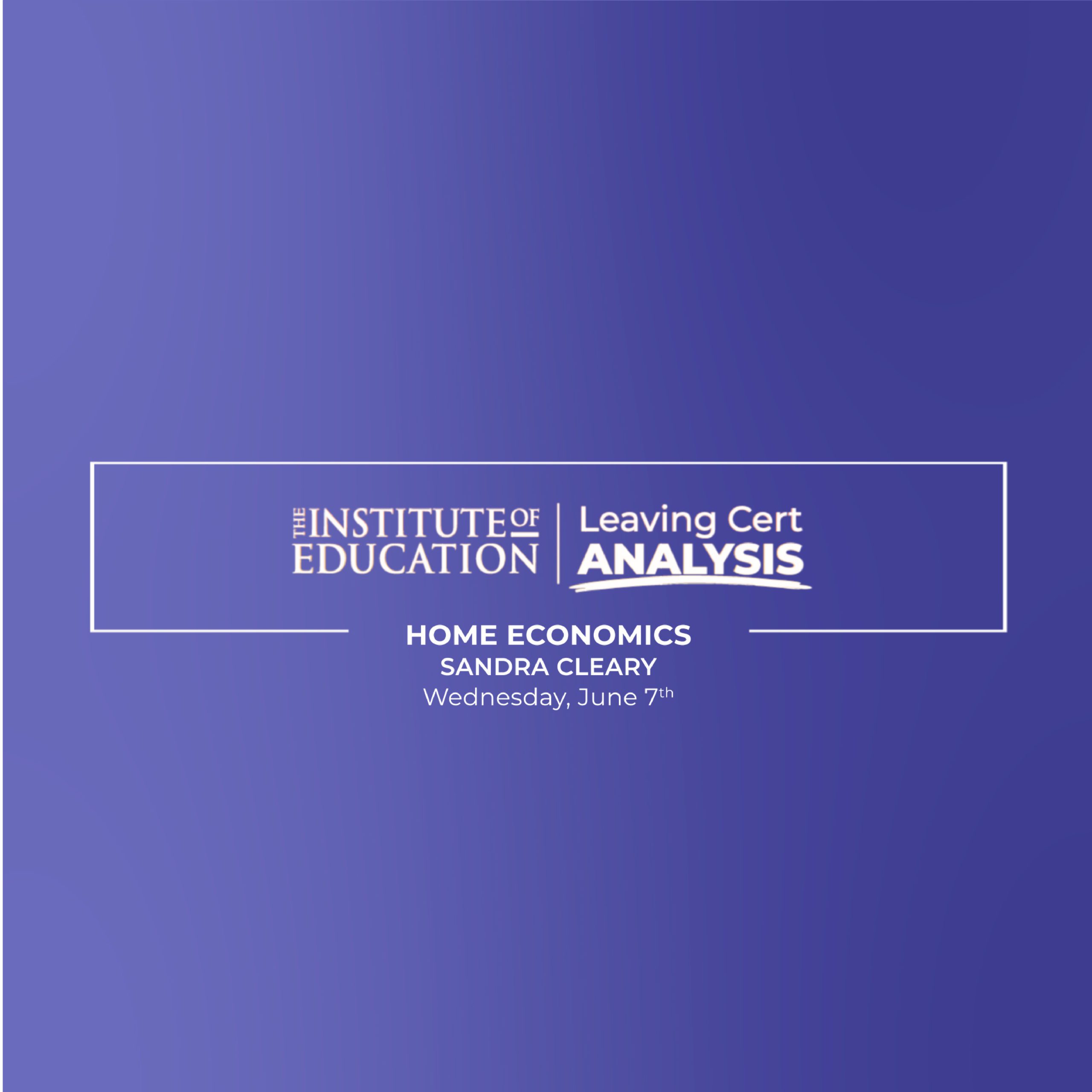Reaction to the Leaving Certificate 2023 Home Economics paper (Higher Level) by Sandra Cleary, Home Economics teacher at The Institute of Education.
- The days of the standard prediction models are gone.
- Students who revised the full breadth of the course will be rewarded but those who tired to study a strategic selection will find themselves unsettled.
In many ways this was an exam in reverse; an exam that discarded standard predictions. For example, topics that were highly expected for Section B’s compulsory question, like lipids and carbohydrates, found themselves appearing in the short questions of Section A. This was just first of a series of curveballs that could find many students unnerved.
A further source potential source of frustration in Section A was the narrow focus of the Home Management short questions in which four of the five questions were drawn from only one topic, Finance. Students with a strong command of the material won’t be phased, but those who were anticipating a more balanced spread will be disappointed.
The surprises kept coming as Section B drew together the extremely recent and the distant in a way that likely undermined the expected cycles of material that some would rely on when deciding where to allocate their efforts. Section B reused the same National Teen Food Survey as last year and, while the questions were straightforward, many were likely hoping that a new source might take its place. The reiteration of Vitamins two years in row meant that there was a clear similarity with last year’s paper. Not inherently a problem for the well-practiced, but a particular repetition nonetheless.
Students who did their due diligence in revising the past papers will have found their determination richly rewarded as Question 3 brought in questions not seen since 2009 (part b) and 2006 (part c). Question 4 asked an aspect of the topic not seen in a decade. Yet these topics also found themselves alongside contemporary topics and concerns. Budgeting and financial planning were key elements of the paper appearing across the board, reflecting current crises around the cost of living and the environment. This meant that paper really embraced and rewarded those that covered the whole syllabus and grasped just how interconnected Home Economics questions are.
Despite these curveballs, the paper was fundamentally fair. There were no questions just pulled out of the sky, no need to improvise. Not a single question’s phrasing should cause confusion. If you prepared everything you were asked to, nothing more was demanded. The students who followed the course to the letter of the law will be well rewarded, but those who tried to second guess the examiner will likely be upset.

